Demystifying Analytics: Engagement, Consumption, Amplification and More
Part 2 of a 3 Part Series
Your editorial planning process in the digital world most likely contains 4 steps. You plan, content is developed, you work with the social media or digital team to optimize and the content gets posted. There should be an additional step in your process that is focused on measurement. You know your content, the impact you hope to have, the goal you hope to achieve, why not decide on how it will be measured before it is revealed to the world?
I suggest you look at the cycle below and note where measurement fits in your activities. It is critically important to first decide how and what will be measured then incorporate the cyclical measurement into the process.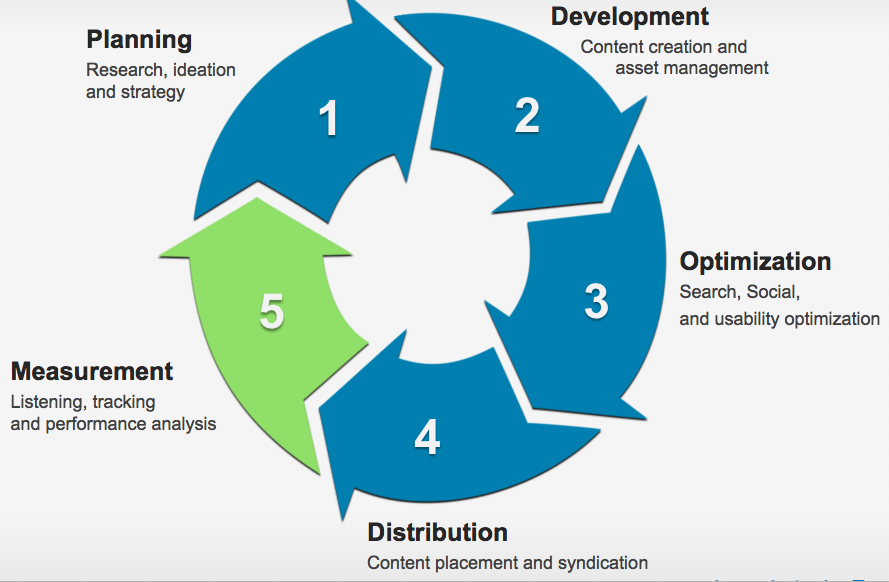
![]()
Aside: It is important to recognize that most view analytics as objective. Those heavily into data at times fail to recognize how subjective information whether that be user feedback, satisfaction measurement, comments and the like actually aid in understanding what is really happening. Using both subjective and objective data and information can create deep understanding into the “story” of what is happening.
Content Measurement Framework
Continuing on to demystifying the groups of metrics and how the individual items discussed in the previous post come together to begin to tell the story. The major groupings are Engagement, Consumption, Amplification (and Influence), Social and Retention. The groupings come together and can be viewed as the content measurement framework or CMF.
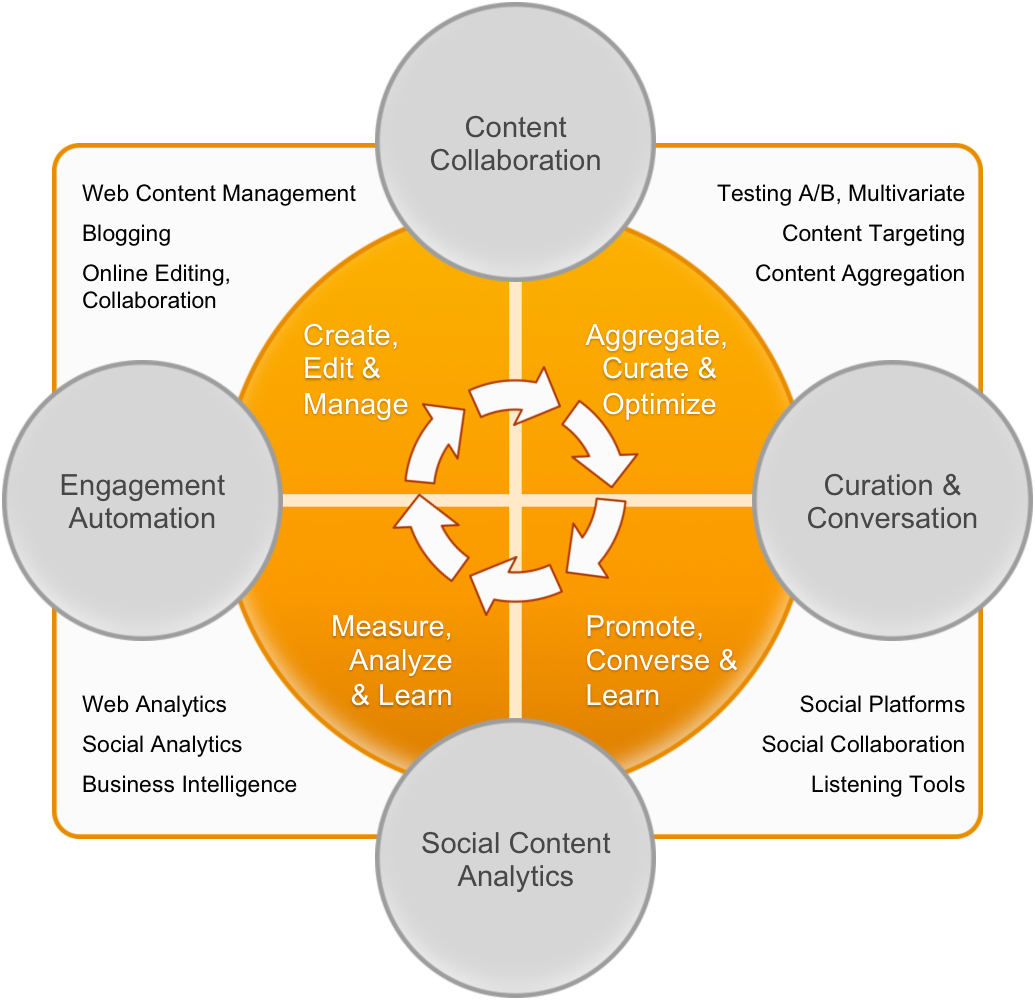 Questions answered by the groupings via CMF include:
Questions answered by the groupings via CMF include:
What is consumed?
What has reach?
What has been shared?
Where has it been shared?
What happened when it was shared?
What are readers connecting and engaging with?
Engagement
Engagement is a general term used to classify interaction a consumer has with brand content, whether it be in an ad, on a brand’s site, or via a brand’s social media profile page. A general definition of engagement is elusive. The reason? How Engagement is defined needs to correlate to who the organization is, what the organization does, what types of content and services it offers, its positioning in the digital realm and most importantly the preferences and demographics of its audiences. An organization shouldn’t put a high value goal for social shares if its audience demographic isn’t comfortable or using social media. Perhaps the audience demographic shares via email which is hard to put a number to. Subjectively you might have to make an educated guess.
Publishers and Editors should not take the cookie cutter approach. Take a step back. Document who you are, what you are trying to achieve, analyze your audience and then define realistic and appropriate goals and objectives using a definition of Engagement this is relevant to you.
Engagement attempts to determine the following:
- Understanding of whether people find your content interesting
- Insight into how people interact with it
- Measurement of what they do with it (comment, share, consume additional content)
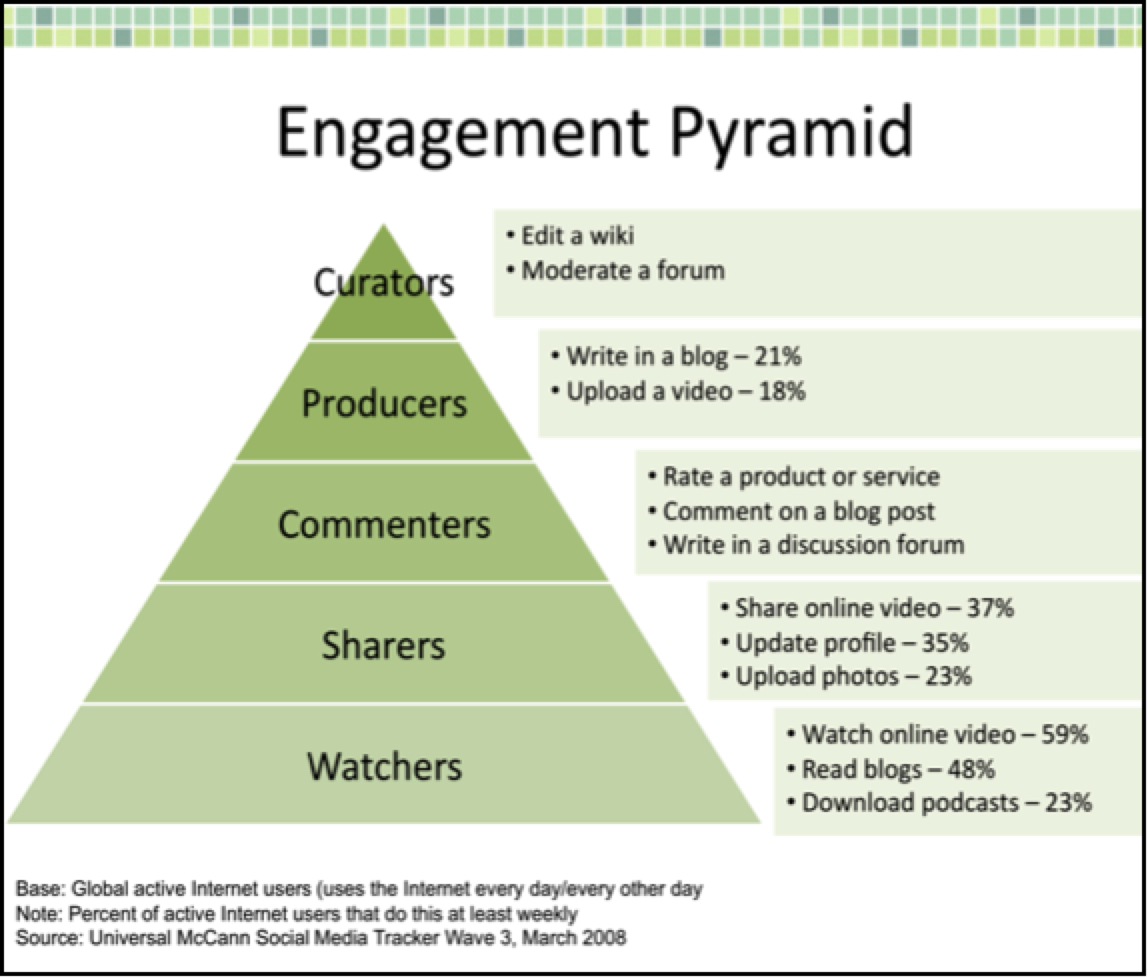
Engagement is generally comprised of the following individual items and seeks to combining “Audience” with “Behavior”:
- Social Shares
- Time on Content Page
- Activity on Content Page
- What a user does with content (view image, listen to audio)
- Exploration into related content (click to archive/available content)
- Commenting
Forrester Research recently shared a great graphic that helps provide insight into Engagement and the flow of major categories. Note in the graphic that ultimately Engagement (like consumption, retention, amplification and social) all roll up to INFLUENCE.
Consumption
Consumption is very similar to Engagement but uses different items to determine “consumption activity”. Note that similarly to Click Streams, discussed in the former blog post, and Engagement; Consumption focuses on both data and behaviors.
The questions Consumption attempts to answer are:

- Are people consuming my content?
- On what channels are they consuming my content?
- What are their content consumption behaviors and preferences?
Consumption is generally comprised of the following individual items:
- Page views: How many times pages are viewed.
- Unique visitors: Tells you how many visitors are new to your website.
- Time on page: Time spent and invested in consuming content.
- Subscriptions: Opt-in to receive your content via email or other method.
- Impressions
- Click-Thru Rate (CTR)
The logic in how these come together relates to values assigned to each area and related performance. Your analytics packages and your analytics staff should be able to work with you to create the appropriate criteria and reports.
Consumption similarly to Engagement should be defined by who you are. Don’t start by saying this is how Joe Publisher defines it therefore we should too. Joe Publisher may be focused on long form scientific content where the expectation of consumption relates to a longer read. Perhaps you publish short news summaries or articles that are read quickly. Perhaps you publish softer content. Plan and define accordingly. You aren’t Joe Publisher and Joe Publisher down the street isn’t you.
There is a lot of buzz across different groups these days about Amplification. The concept isn’t new but is a bit different in the digital space. The opportunity to take advantage of the Internet and the quantity of eyes and voices instantaneous requires thinking differently about how you share and publish your content.
Amplification as it relates to content focuses on the reach and spread of your content beyond the confines of your website, mobile experience or online magazine.
Amplification like engagement and consumption focuses on shares, comments, follows, likes, thumbs up, and references and referrals that users and sites make to your content.
Like engagement and consumption, how amplification and the success of which is defined is really unique to your organization. Perhaps you have a niche audience or there are a limited amount of sites that focus on and may refer your content. Define first the world you exist in then apply goals and measures around amplification.
As you create the goals and measures, take into consideration the following (and I am sure most of these look familiar and related to the “print” world strategies):
- Behaviors and Demographics
- Personas (understanding and defining members of your audiences)
- Seasonality
- Current Trends and Interests
- What is in the News
- Campaign/SEO
- Social Activity
- Sentiment (society’s desire or interest)
- Distribution Strategy/Placement
Amplification is a two-way street. Your hope is to get your “readers” to amplify your content but you also need to take responsibility for amplifying your content. I have long championed organizations to focus on a distribution strategy.
A website is an island. An organization, particularly given the size of today’s digital realm, can’t expect that “readers” are going to find and seek out the island. Websites are generally “passive” experiences and resources.
An organization needs to determine which sites to publish their content to and broaden the exposure to “readers” and focus on distributing content to those sites. The opportunity is to put your content in front of readers where they may routinely go. The expectation is that they will discover your content, amplify it and hopefully come to your island to read further or discover other content. There are some organizations that take advantage of distribution. Buzzfeed recently moved forward with a distribution strategy recognizing the opportunity to amplify.
Sharing
Sharing metrics include but are limited to the following:
- Social Shares: Tweet, Post, Share, Retweet, etc.
- Social Actions: Pin, Like, etc.
- Email/Feeds: Subscribers
- and Forwarders
Like the other major groups, each uses similar or the same items to provide insight. All organizations are still grappling with the value of a share, retweet, pin etc. but recognize that they contribute to engagement, consumption and amplification. They come together for an organization who wants to be a social listening organization.
Sharing Metrics help create understanding of the following:
- How your content resonates with your audience.
- Demonstrate what content is useful.
- Demonstrate content they resonate with.
- Demonstrate content they like and want to promote.
To beat the drum once more: how social success is ultimately defined and managed should be matched to your organization. You may not have an audience that likes to tweet, your audience may or may not use Facebook, you may not produce content that can be “pinned” to Pinterest. Define who you are, who your “readers” and audience is and track the appropriate social metrics.
Retention
Retention equates to revenue and reach. Retention offer insights into the following:
- How many people are coming back to consume other content?
- How often are they coming back to consume other content?
- How many people are subscribing to receive future content updates?
- Are subscribers continuing on?
The following (and again you will see a theme here in individual items previously discussed coming up again in different groups) are used generally to assess retention:
- New and returning visitors: Volume of returning visitors and traffic spikes when new content is published and promoted.
- Bounce rate: Percentage of single-page sessions. A bounce means the visitor exited from the same page they landed on.
- Social media: Measured by your follower/fan counts.
- Un-Subscribes (email).
- Subscription renewals.
How you define retention once again should be focused on who you are. You are unique and finding an apples to apples comparison may be challenging.
Social and Retention
Lastly, I want to demonstrate how the major groupings can be used together in the funnel. The following from Forrester demonstrates how Social and Retention elements can come together into categories to understand INFLUENCE and EXPOSURE. Note how the same items across Engagement, Consumption, Social, Amplification and Retention are reflected. Each individual data element/item is reflected. Understanding what each of those individual elements/items are, what they really represent and where they come from is an important step to understanding what the larger groupings mean and how they can be used. Also of importance is knowing how they exist and feed off of each other in the digital eco-system.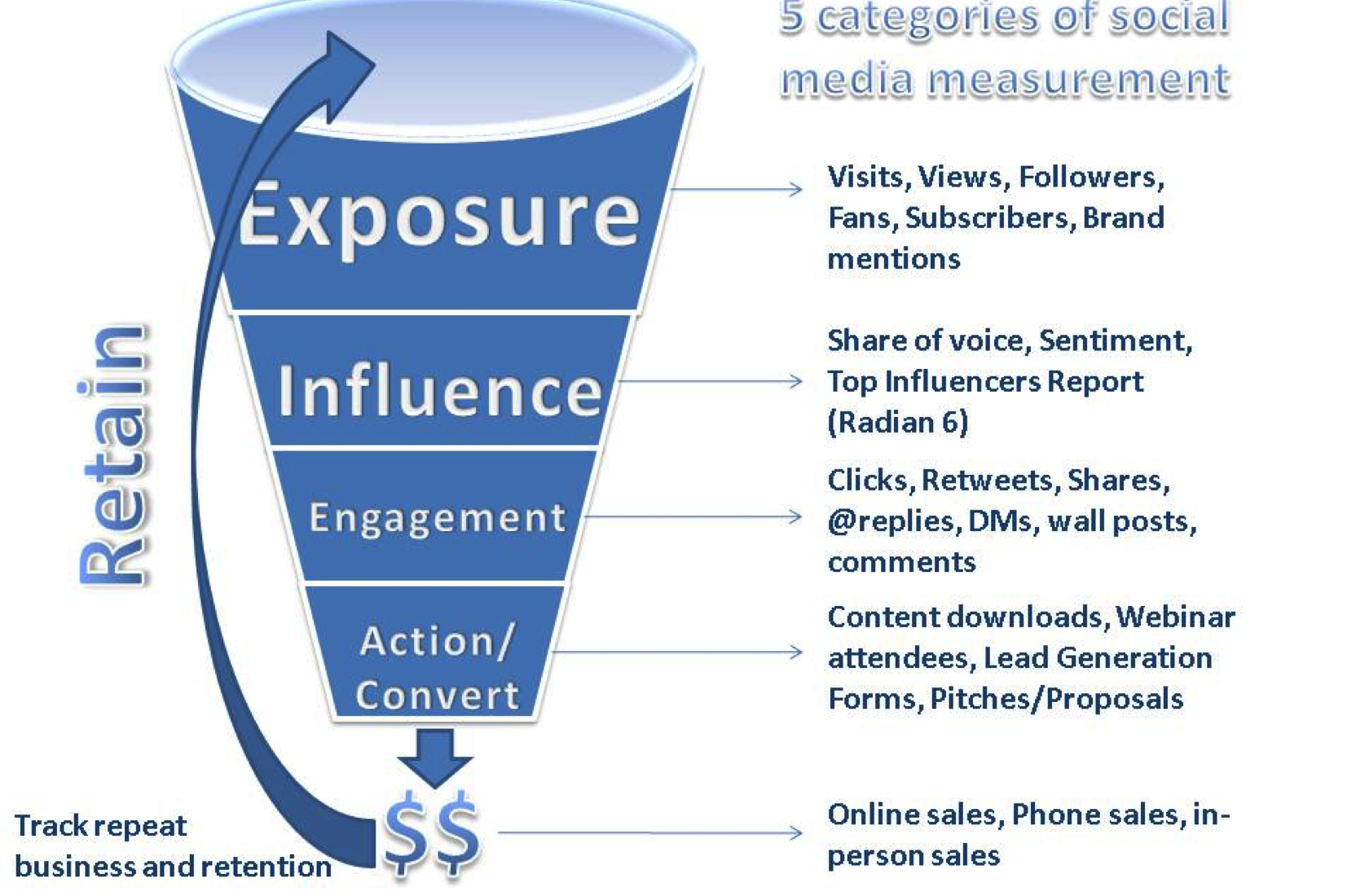
I want to end this post with some experiments and exercises that you can undertake on your own or with your analytics staff. The experiments and exercises can enlighten you on how data and analytics can begin informing your tasks and plans and how you might use them to create your measurement strategy.
Select a section of your website…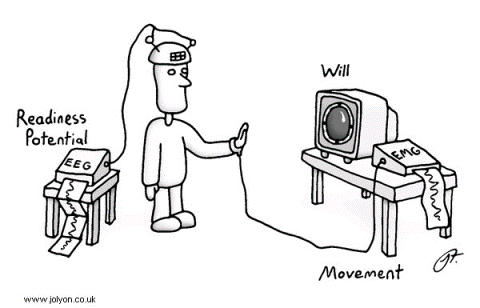
Look at where readers came from over 30 days.
- Did readers that came from social websites look at different articles than readers that came from searches?
- Select three specific referral sources, like a tweet,
an outside website and map out how the reader went from those sources to your website. - Identify the differences between the sources.
- Does any of what you found suggest changes you can make for future stories or distribution methods?
Review the click streams visual:
- Are the readers following the path you intended?
- Are readers consuming relevant content you publish around the main story?
- Are the videos viewed when a user is consuming content?
- Are users quickly leaving the content page?
- Are click streams demonstrating targeted content is “read”?
If you do the experiments and exercises, I want to hear from you. Let me know what you learned. Let me know what you found. Share with your fellow editors and publishers to help them on their journey to understanding data and the value of analytics.
The next post in this series will focus on Headline Testing. Headline Testing beyond A/B testing that can help you understand historical performance and to predict future performance of your choices and “reader” behaviors.
If you or your organization needs help in any of these areas, please give me a call or drop me an email.
I relish the opportunity to work with organizations to help them understand analytics and aid in prioritizing what is most important for your content and increasing your relevance in a noisy world.
As always, please let me know your thoughts and questions.


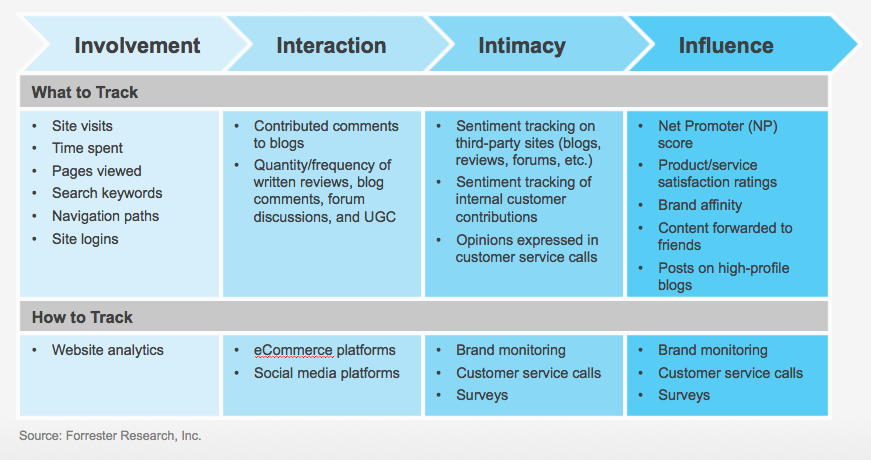
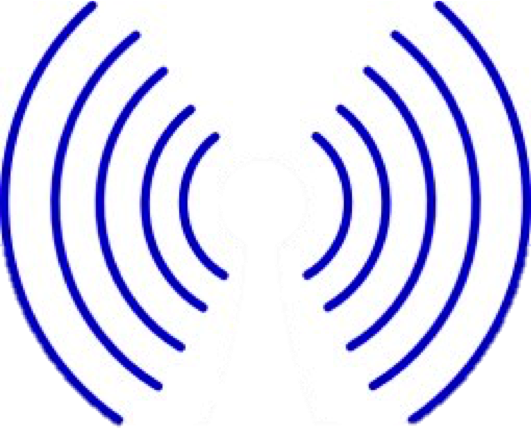
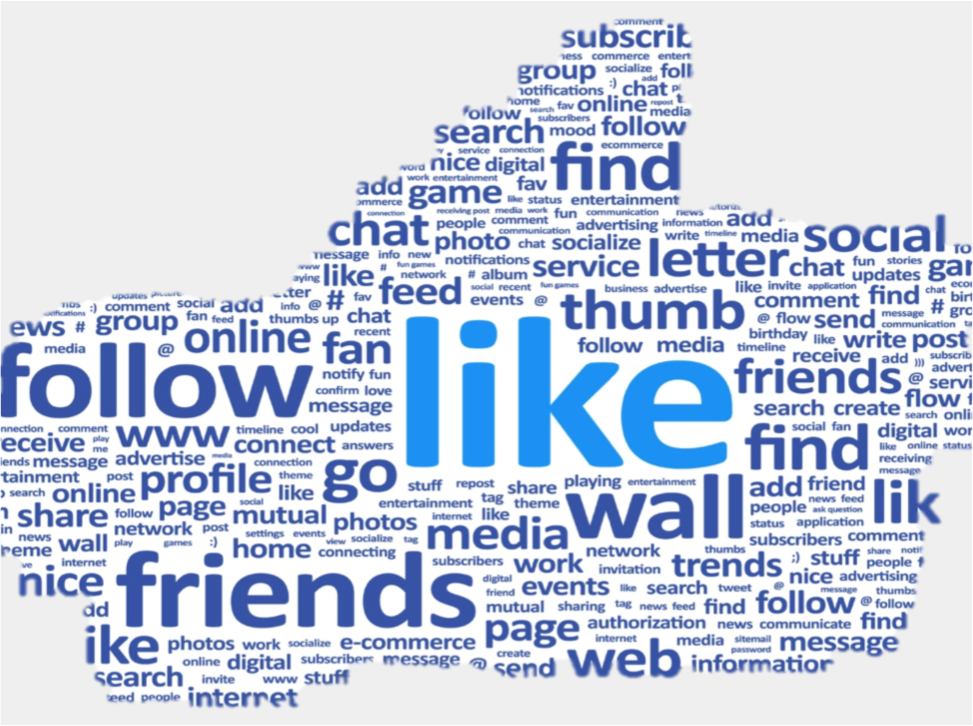




This Post Has 0 Comments